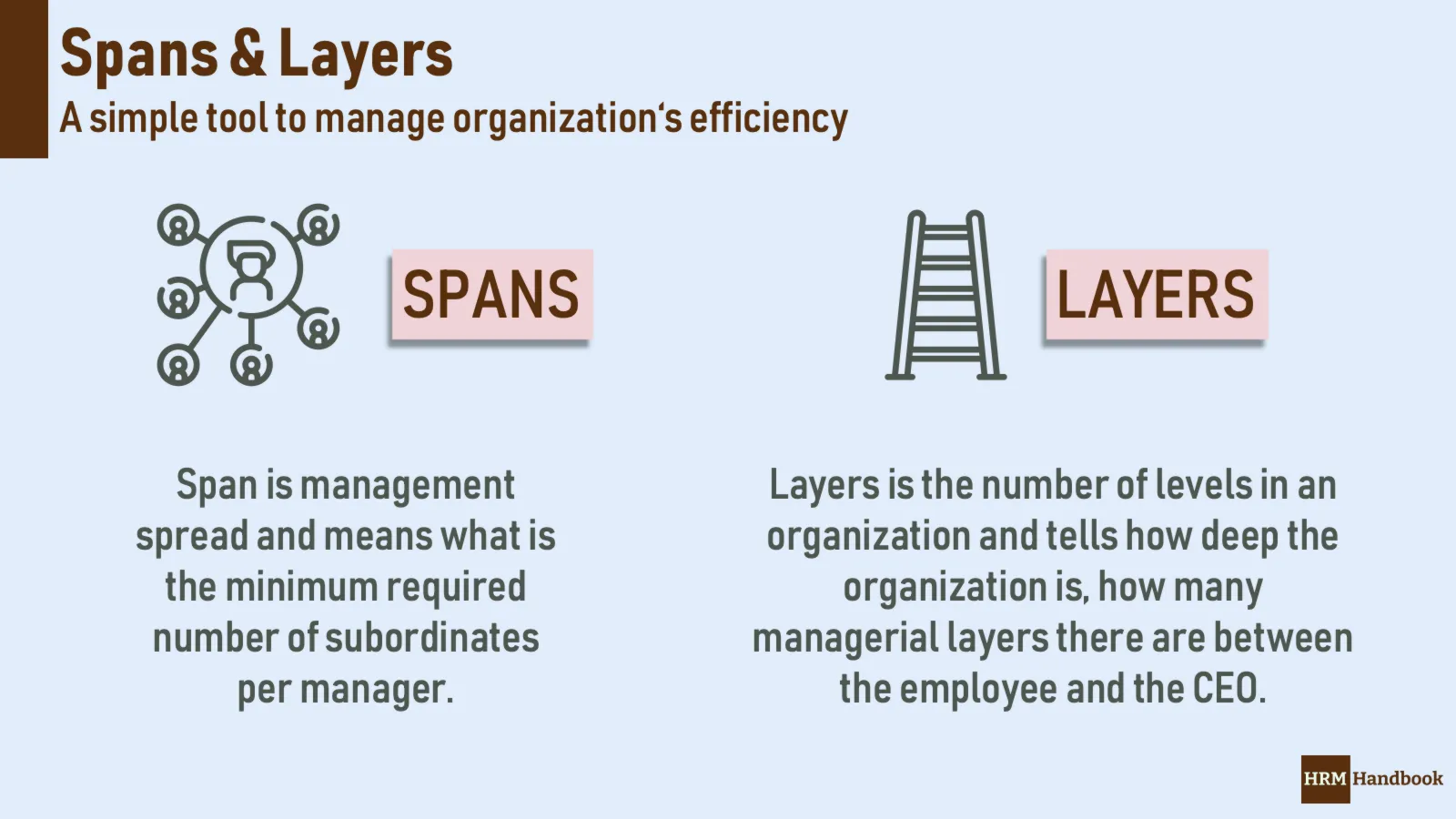Span and Layers
Organizations tend to swell over time, not only in government institutions but also in the private sector. As a company grows and ages, the processes within become more complex and the organisation drags its legacy behind it. New roles are created, unnecessary complexity is introduced, and as a result, efficiency and productivity stagnate or decline. Span and Layers rules are protective rules to protect the organization from unnecessary creation of managerial jobs and increasing number of managerial levels in the organization.
Large corporations in particular are susceptible to such swelling, and therefore they often establish complex rules about when a position can be created, how it is classified, what benefits it is entitled to, and what the allowed wage range is. These are often very sophisticated systems, but managers and employees know that they are not there to encourage creativity, but to prevent uncontrolled growth. Unfortunately, they often limit innovation and healthy sustainable growth of the overall business along with it.
Of course, companies often implement simpler rules that just say how many levels of management are allowed in the company (layers) and how many subordinates a manager must have for his/her role to come into existence (spans).
The two rules are closely linked and help to effectively manage costs and reduce bureaucracy in the organization.
Span is management spread and means what is the minimum number of subordinates per manager. It is a very effective tool that will not allow a new managerial position to be established until the agenda for the new department is broad enough and the workload is sufficient for a new managerial position to be established.

When looking for resistance and opportunities to speed up decision making, increasing the number of subordinates per manager is one of the fastest methods to achieve success. Of course, it is necessary to keep a realistic view of the whole problem and not make a decision that is too drastic.
Today, it is quite common that the average number of subordinates per manager is less than three employees. If an increase and standardisation to at least three is established, relatively decent savings can already be achieved in this step. Of course, setting the number at seven will achieve dramatically different savings, but the company is likely to collapse because the managers will not be experienced and mature enough to manage such a wide and varied agenda.
The best firms often have a span of six to eight subordinates per manager, but this is really exceptionally good practice; targeting that high is very expensive because it also requires exceptional managerial quality, and not every person is capable of reaching that level. Choosing a practical target between four and five is the way to sustainable costs.
Layers is the number of levels in an organization and tells you how deep the organization is, how many managerial levels there are between the employee and the CEO. As we build a complex organization and the company grows, we often add managerial layers, slowing the entire company down. Each extra level means at least one extra decision.
The fewer the number of levels, the faster the decision making. On the other hand, fewer levels extremely increases the demands on the quality of managers in an organization because the number of agendas they must oversee, decide, and control increases dramatically.
Reducing the number of managerial levels must always come with a revision of the span of management, and there is a great risk that the whole effort will fail and the company will be paralyzed for a relatively long period.
If the number of levels is high in only some parts of the company, a thorough analysis of why this is so is needed, because, for example, sales teams tend to swell and have a relatively flamboyant organisational structure which, of course, delivers results.